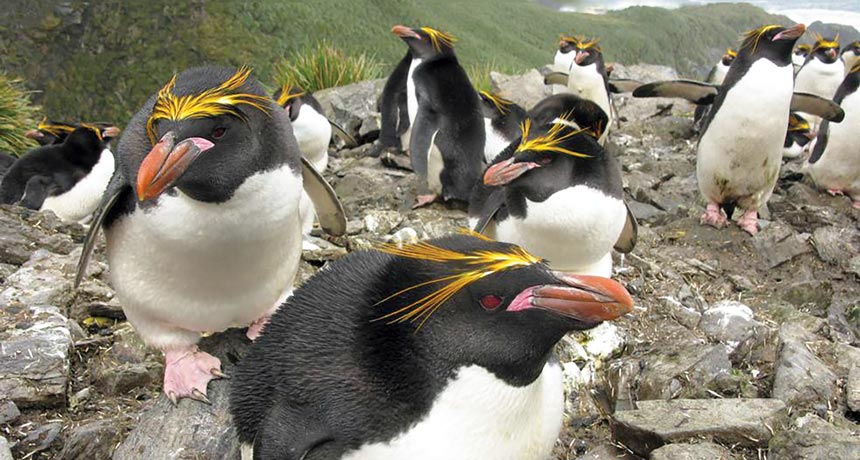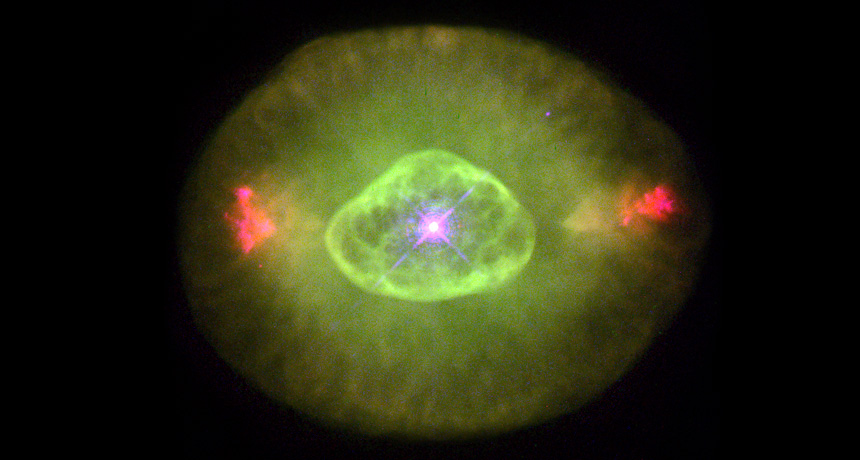Tom Wolfe’s denial of language evolution stumbles over his own words

Language is a tricky thing to write about. You’re using it while dissecting it. That sort of recursion can trip you up. As a philosopher friend of mine once said, a zoologist studying tigers, while riding on the back of a tiger, should be very careful.
Of all the writers who’ve ever taken on the task of writing about language, nobody of any consequence has ever tripped himself up quite so much as Tom Wolfe. His new book, The Kingdom of Speech, has been widely denigrated (deservedly) by scientists who have encountered it. Wolfe has taken it upon himself to explain various aspects of science — having to do with biological evolution, linguistics, psychology and cognitive neuroscience — to scientists, in the process disparaging titans in their fields such as Charles Darwin and Noam Chomsky. It’s kind of like Brad Pitt or Angelina Jolie trashing George Washington and Abraham Lincoln. Wolfe pontificates about language without realizing that he’s riding on the back of a linguistic tiger.
It’s difficult to criticize him, though, without lapsing into the same sort of abominable adhominemism with which he assaults Darwin and Chomsky. It’s not enough just to assert disagreement with Darwin’s views on how language evolves or Chomsky’s theory that evolution endowed all human babies with a built-in hardwired “universal grammar.” Wolfe attacks their character.
He presents Chomsky as a demon, a bully, a knave. When criticizing another’s research, Chomsky “pulls out a boning knife and goes to work,” Wolfe writes; he refers to Chomsky’s “audacity” and accuses him of “double talk.” He calls him “an angry god raining fire and brimstone.” He lambastes Chomsky for attacking his critics as liars, charlatans and frauds. In short, Wolfe attacks Chomsky for using against others the same linguistic strategy that Wolfe uses against Chomsky. Riding on a tiger.
Wolfe gives the impression of being jealous of Chomsky’s fame, which seems odd for a writer so famous himself. As for Darwin, Wolfe presents the greatest biologist in history as a petty thief who stole credit for the theory of evolution by natural selection from Alfred Russell Wallace, who was (Wolfe alleges) screwed over by the British gentlemen’s club conspirators who rigged the system to give Darwin credit for priority. And then Wolfe ridicules Darwin for reporting observations on the behavior of his dog.
But the poverty of Wolfe’s intellectual rhetoric does not cement the case against him. Just as belittling Darwin and Chomsky personally does not really rebut their science, condemning Wolfe’s rhetorical juvenility does not confront the substance of his thesis — that humans invented speech (and subsequent forms of language derived from it) — and that evolution had nothing to do with it. And that speech, and speech virtually alone, makes humans superior to other animals.
Somehow Wolfe manages to claim that he and he alone has figured out what no one else (at least, “no licensed savant”) ever thought of, that speech is the “cardinal distinction between man and animal.” It did not evolve. “Man, man unaided, created language,” Wolfe says. Language is a system of mnemonics, based on sounds that represent meaning, enabling people to remember, think and plan. And humans invented that system. Yes, invented it!!! (That’s how Wolfe writes: his rhetoric would collapse if denied the use of italics and exclamation points.) In any case, the question is not whether Wolfe dismisses Darwin and Chomsky unfairly, but rather whether he marshals sufficient factual evidence to support his central claim.
But facts are not Wolfe’s strong suit. On page 5, for instance, he announces that Watson and Crick discovered DNA. How unfair to Friedrich Mieschler, who discovered the molecule deoxyribonucleic acid in 1869. Watson and Crick discovered its double helix structure. Given such a weak grasp of such an elementary fact, Wolfe’s subsequent assertions on subtle points of evolutionary theory warrant suspicion.
There’s more. In one of his book’s most tweeted passages, he asserts that evolution fails all the tests of what makes “science”:
“Had anyone observed the phenomenon…? Could other scientists replicate it? Could any of them come up with a set of facts that, if true, would contradict the theory (Karl Popper’s ‘falsifiability’ test)? Could scientists make predictions based on it? Did it illuminate hitherto unknown or baffling areas of science?”
To which questions Wolfe answers “no … no … no … no … and no.” But to which any long-time reader of Science News would have responded “yes, yes, yes, yes and yes” (as would any knowledgeable scientist, as biologist Jerry Coyne, among others, has pointed out).
Wolfe’s citing of Popper is especially lame; although in early writings Popper criticized natural selection, in his later years he assented that natural selection could be posed in testable terms (he even thought that it failed the test under certain circumstances).
Nonetheless it is true that ideas about the evolutionary origin of language are difficult to test. Wolfe, in fact, anchors his argument with two recent papers (2014), each with Chomsky as a coauthor, asserting that “the most fundamental questions about the origins and evolution of our linguistic capacity remain as mysterious as ever.” Evidence on this issue is either “inconclusive or irrelevant,” Chomsky and colleagues wrote in Frontiers in Psychology. Evidence of Neandertal ability to produce speech does not help trace the beginnings of language, he and collaborators wrote in PLOS Biology. Speech ability “is undoubtedly a necessary condition for the expression of vocally externalized language,” but “is not a sufficient one, and … is evidently no silver bullet for determining when human language originated.”
Others would disagree on how well the evidence illuminates language’s origins, just as some experts in linguistics have disagreements with Chomsky on many other points. But even if you acknowledge a lack of “conclusive” evidence, that’s not the same thing as saying there is “no evidence” — as Wolfe repeatedly alleges.
Of course, both papers clearly state that language did, in fact, evolve — it’s just that science can not yet say exactly how. And it’s true that the origin of speech is among the most stubborn of mysteries. So are the origin of the universe, the origin of life and the origin of baseball. Science has not yet fully understood the causes of Alzheimer’s disease, either (and certainly has found no cure); the logical conclusion is not that man just decided to get Alzheimer’s disease. Research continues on the premise that its biological basis might yet be discovered.
Boiled down to its essentials, Wolfe’s case amounts to a fairly sparse syllogism: Science has not been able to establish how human language originated and evolved. Therefore, it did not evolve. And furthermore, I (Wolfe) know how it originated. Humans invented it.
Wolfe apparently doesn’t seem to care that his major premise is based on two papers that assert that language did in fact evolve. Or that his argument against language evolution hinges on a lack of testable evidence, while he declares that he knows how language originated — without any testable evidence. Tigers.
And Wolfe certainly missed the irony of one sentence in the paper in PLOS Biology he cites. “Evolutionary analysis of language is often plagued by popular, naïve, or antiquated conceptions of how evolution proceeds,” Chomsky and collaborators wrote. As in Wolfe’s book.








